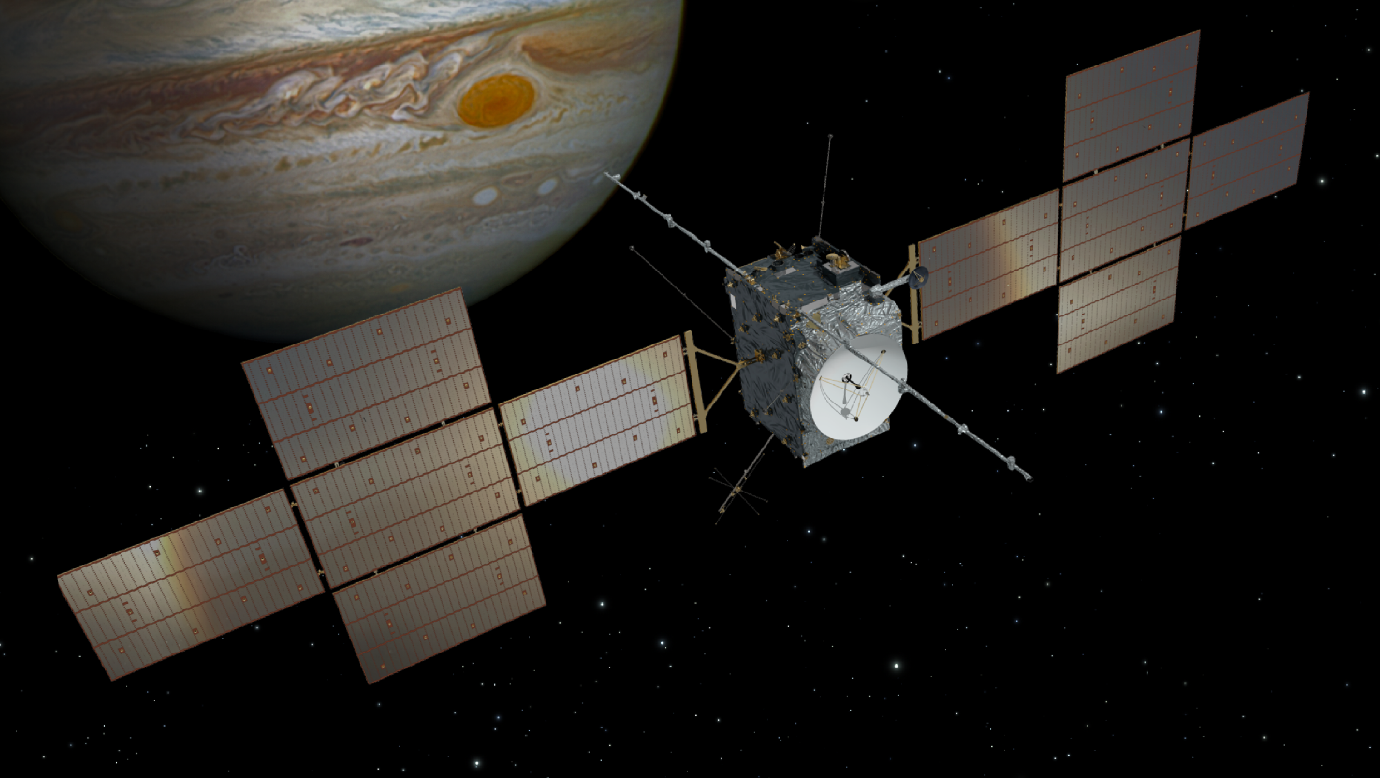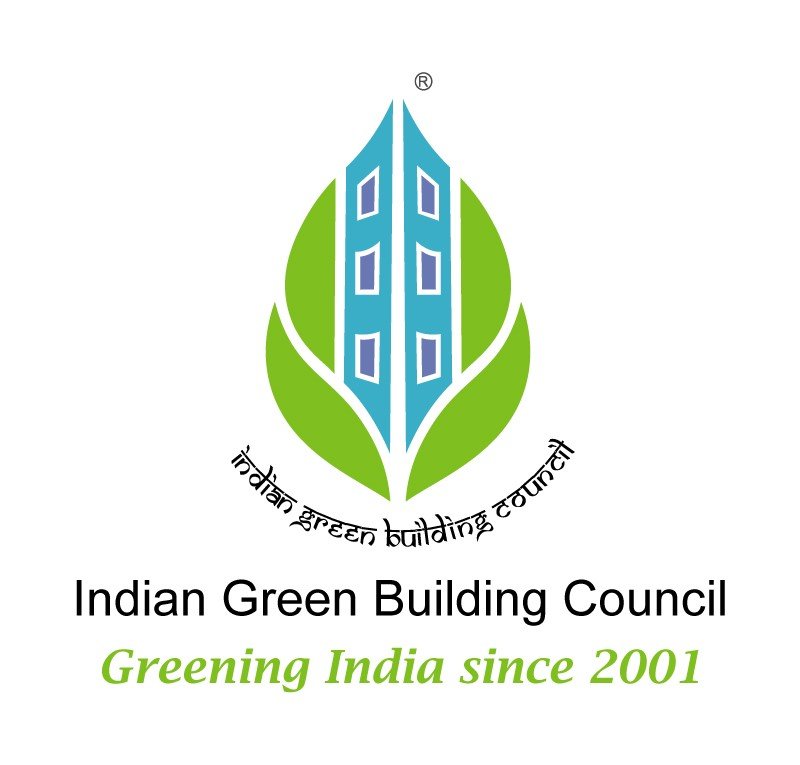JUICE Mission
JUICE Mission
About:
The European Space Agency (ESA) is undertaking a mission known as JUICE, aiming to explore Jupiter and three of its icy moons: Europa, Callisto, and Ganymede.
Objectives:
- The primary goals of the probe are to investigate the potential for life in space and unravel the origins of Jupiter.
- The journey to Jupiter is expected to take almost eight years.
- JUICE will extensively study Jupiter’s complex magnetic, radiation, and plasma environment, examining its interactions with the moons.
- Approximately four years after reaching the Jupiter system, JUICE will enter orbit around Ganymede, Jupiter’s largest moon, conducting comprehensive exploration, marking the first time a probe orbits a planetary moon other than Earth’s.

Spacecraft Features:
- The spacecraft is powered by mono-methyl hydrazine (MMH) fuel and mixed oxides of nitrogen (MON) oxidizer, which ignite upon contact. This propellant will facilitate crucial course manoeuvres during the mission.
- Equipped with 10 instruments, JUICE will characterize the ocean-bearing icy moons of Jupiter.
- The spacecraft will be launched using the Ariane-5 rocket, a reliable workhorse for the European Space Agency
The mission will consider two key themes of ESAs Cosmic Vision 2015-2025:
- What are the conditions for planet formation and the emergence of life?
- How does the Solar System work?
Under these themes, Juice will explore-
- the habitable zone – namely characterizing the oceans, icy shells, compositions, surfaces, environments, and activity of Ganymede, Europa, and Callisto
- the wider Jupiter system, characterizing Jupiter’s atmosphere, magnetic environment, ring system, and other satellites
|
Jupiter Moons: Jupiter forms a kind of miniature solar system with four large moons and many smaller moons.
Jupiter’s four largest moons – Io, Europa, Ganymede, and Callisto – were first observed by the astronomer Galileo Galilei in 1610 using an early version of the telescope.
|
Past missions
- NASA’s New Horizons spacecraft was the first mission to fly past the Kuiper Belt worlds Pluto and Arrokoth.
- NASA’s Cassini mission orbited Saturn from 2004 to 2017, circling the planet 294 times and teaching us almost everything we know about our ringed neighbor.
- NASA’s Galileo was the first spacecraft to orbit Jupiter. It revealed the structure of the planet’s magnetic field and intense radiation belts, made the first detailed maps of Jupiter’s major moons, hinted at a possible underground ocean on Europa, sent the first probe to sample a gas planet’s atmosphere, and more.
- Voyager 1 and Voyager 2 launched in 1977 and each made a grand tour of the solar system before heading out of it.
- NASA’s Pioneer 10 and 11 are twin probes that helped illuminate the outer stretches of our solar neighborhood.
Miyawaki Plantation:
About:
- Named after Japanese botanist Akira Miyawaki, this method involves the planting of two to four different types of indigenous trees within every square meter.
- Developed in the 1970s, the primary objective of this methodology is to increase the density of green cover within a small parcel of land.
- In the Miyawaki method, the trees become self-sustaining, reaching their full length within three years, and generally, they do not require regular maintenance such as manuring and watering.
Significance:
- The dense green cover consisting of indigenous trees serves a crucial role in absorbing dust particles in the area where the garden is established.
- Additionally, these plants contribute to the regulation of surface temperatures.
- Common indigenous plants used in Miyawaki forests include Anjan, Amala, Bel, Arjun, and Gunj.
- These forests promote new biodiversity and an ecosystem that, in turn, enhances soil fertility
Key Principles:
- Biodiversity:
- Planting numerous native species in close proximity to encourage natural competition, symbiotic relationships, and the development of a self-sustaining ecosystem.
- Dense planting:
- High-density planting of trees ensures that the canopy closes quickly, minimizing sunlight reaching the ground.
- It reduces the weed growth, thus enhancing the growth of tree saplings.
- High-density planting of trees ensures that the canopy closes quickly, minimizing sunlight reaching the ground.
- Soil preparation:
- The soil is carefully prepared by adding organic matter, nutrients, and microorganisms to create a fertile and conducive environment for tree growth.
- Mulching:
- Mulch is applied to the forest floor to retain moisture, suppress weed growth, and enhance soil fertility.
- Regular maintenance:
- Proper care and maintenance, such as watering, weeding, and monitoring, are crucial during the initial years to ensure the successful establishment of the forest
Benefits:
- Rapid forest development:
- Miyawaki forests have a remarkable growth rate, with trees reaching maturity in a much shorter time compared to traditional plantations.
- This is due to the dense planting and carefully prepared soil, which promote rapid canopy closure and efficient resource utilization.
- A study revealed that Miyawaki forests grow 10x faster, are 30 x denser and contain 100x more biodiversity.
- Miyawaki forests have a remarkable growth rate, with trees reaching maturity in a much shorter time compared to traditional plantations.
- High biodiversity:
- The Miyawaki Method emphasizes the planting of a wide variety of native species in close proximity.
- These forests become thriving habitats for birds, insects, and other wildlife, contributing to overall ecosystem health and resilience.
- Enhanced carbon sequestration:
- The dense vegetation and rapid growth of these forests enable efficient carbon absorption, helping to mitigate climate change and reduce greenhouse gas emissions.
- Improved soil quality:
- The careful soil preparation in the Miyawaki Method results in the enrichment of soil fertility and structure.
- Noise and air pollution reduction:
- Miyawaki forests planted in urban areas can help mitigate noise pollution by acting as sound barriers and absorbing sound waves.
- Additionally, they contribute to improving air quality by absorbing pollutants and particulate matter, thereby reducing air pollution levels.
- Sustainable water management:
- The dense vegetation of Miyawaki forests act as natural sponges, absorbing rainfall and reducing runoff, thus contributing to better water retention and preventing water pollution.
- Regulates surface temperature
- Miyawaki forests can help regulate surface temperatures, particularly in urban areas where the urban heat island effect is a concern.
- The urban heat island effect refers to the phenomenon where urban areas experience higher temperatures compared to surrounding rural areas.
- This is due to human activities, the presence of buildings and pavement, and the lack of vegetation.
- Miyawaki forests can help regulate surface temperatures, particularly in urban areas where the urban heat island effect is a concern.
Indian Green building council
About:
- The Indian Green Building Council (IGBC) is part of the Confederation of Indian Industry (CII) and was formed in the year 2001.
- It is India’s Premier certification body.
- The council offers a wide array of services, which include developing new green building rating programmes, certification services and green building training programmes.
- The council also organises the Green Building Congress, its annual flagship event on green buildings.
- It is also among the 5 countries that are on the board of the World Green Building Council, discussing global issues at COP and similar global platforms.
- The rating is based on six environmental categories, which include sustainable station facility, health, hygiene and sanitation, energy efficiency, water efficiency, smart and green initiatives and innovation and development.
Headquarter: Hyderabad

|
What are Green Buildings?
|
Characteristics of Green Building:
To evaluate a building’s sustainability, LEED certification establishes a points system based on various sections, which we will review below, related to design and construction:
- Location and transport: Do not build in environmentally sensitive locations and provide public transport to reduce private car use.
- Sustainable sites: Protect and maintain the natural habitat, reduce pollution and the use of natural resources and facilitate interaction with nature.
- Efficient use of water: Minimise the use of water during construction and provide mechanisms to reduce the building’s water footprint.
- Energy and atmosphere: Reduce energy consumption, use renewable energy and increase energy efficiency to reduce pollution.
- Materials and resources: Incorporate recycling systems, use sustainable materials and save as many resources as possible during construction.
- Indoor environmental quality: Address the quality of the space for its occupants, such as air cleanliness, thermal control and noise pollution.
- Design innovation: Implement innovative sustainability strategies during its construction.
- Regional priority: Achieve improvements for the place where it is located in terms of the environment, social equity and public health
